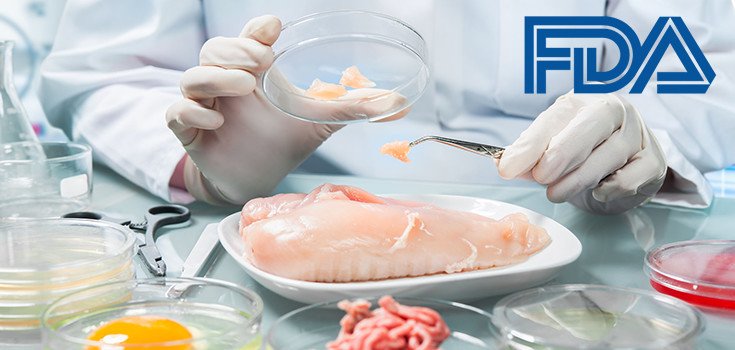FDA Launching Overhaul of Food Safety Regulations to Help Prevent Food Poisoning Outbreaks

The Food and Drug Administration is making the most dramatic changes to its food safety regulations in more than a century in an effort to stave off outbreaks of food poisoning, which claims more than 3,000 lives a year.
The purpose of the changes, as obvious as it may sound, is to make food processors anticipate where pathogens might enter food products and to take preventative action. [1]
The federal government on Thursday announced the finalization of the new rules nearly 5 years after Congress passed a piece of legislation requiring a massive overhaul of the U.S. food safety system.
Each year, 48 million Americans are sickened with food poisoning, or 1 out of 6 people. Nearly 128,000 become sick enough to be hospitalized, and about 3,000 people die. Until now, food manufacturers, distributors, and regulators were only required to react to outbreaks of food poisoning. But now, under the Food Safety Modernization Act, they must actively work to prevent the spread of food-borne pathogens. [2]
Related: FDA Hits Good, Organic Food with Food Modernization Act
“It is the first time that food processors are going to be required to prevent contamination. That’s huge,” said Sandra Eskin, who directs food safety research at the Pew Charitable Trusts.
Under the new rules, companies must have a written plan for identifying and dealing with contamination.
“When an inspector comes into a processing facility, they will ask for a copy of the safety plan and look at their records,” Eskin said. “It should be clear if there’s no plan or if they are taking no steps.”
The regulations will be rolled out slowly, over time, beginning in 2016 and lasting into 2018. The first batch, announced Sep. 10, applies to processed foods, like peanut butter and ice cream. More rules will be announced later this year, extending to fresh produce and imported goods. Nearly half of fresh fruits and 1/5 of vegetables are imported to the U.S. each year. That hasn’t always been the case, and the relatively new shift has complicated food safety monitoring.
Michael R. Taylor, deputy commissioner for foods and veterinary medicine at the F.D.A., said the law’s mandate was to “transform the whole food safety system.” The fact that the rules were finalized in under 5 years was no small feat, according to Taylor. The effort required a great deal of negotiations with state and foreign governments, farms, food manufacturers, and food importers.
“We don’t want to issue regulations that force change for change’s sake if they don’t make a real difference in food safety,” he said. “Getting high rates of compliance is really the crucial issue.”
Small producers with less than $1 million in sales are exempt from the rules, to the dismay of some consumer advocates. Overall, though, the food industry is comfortable with the changes.
In a statement, the Grocery Manufacturers Association praised the FDA “for the deliberative and inclusive approach it took in developing these regulations.”
Currently, the FDA inspects a food facility every 10 years. Now, that will be increased to every 3 years. Taylor says the agency has plenty of inspectors to increase the schedule, but they’ll have to be retrained.
The FDA will need $110 million in next year’s budget to complete the overhaul.
Additional Sources:
[1] NBC News
